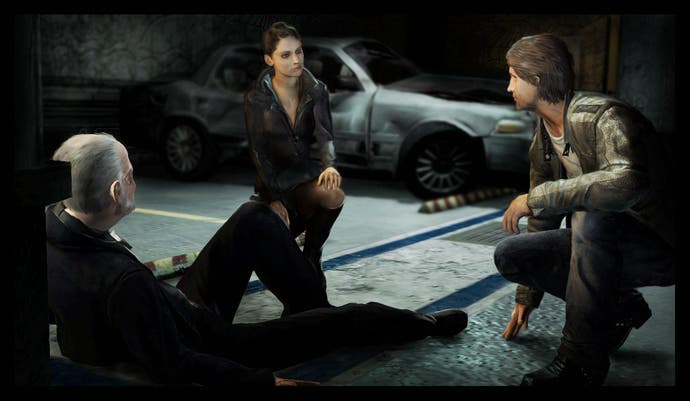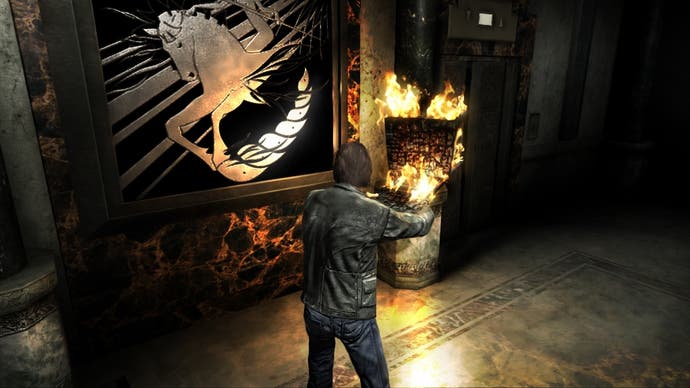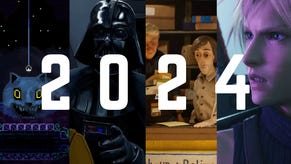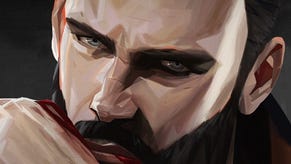Alone in the Dark
The Garden of Eden.
At sea in an ocean of blockbusters, Alone in the Dark has no choice but to punch above its weight: high production values, biblical clashes between good and evil, and precociously elaborate game mechanics unite, embraced by a rigid but versatile single location and tempted in every direction by a developer unafraid, perhaps even desperate, to sling every idea at the wall and hope the majority stick.
Beginning in an apartment block overlooking New York's Central Park, which the game centres around, you're thrown behind the eyes of a drowsy Edward Carnby, woken as a captive in the grip of amnesia opposite a weary, cudgelled old man called Paddington. As grimy henchmen drag you away to your death, an unexplained force wrenches the building apart, coincidentally fashioning your escape at the tips of its grumpiness. Dragging yourself through the collapsing structure - grasping the complex controls as groggily as the character you're playing finds his own feet - you meet the key players and catch the gist: an ancient ritual has unleashed something, it's grouchy, and everyone's priorities are going to be shaped by its thrashing arousal.
Soon dumped in Central Park with a gun, a flashlight and a ready supply of explosives and scavenged first-aid kits, Carnby is instructed to head to the museum to meet someone - someone he shouldn't be able to meet - and as the adventure expands and contorts, Alone in the Dark offers a counterpoint to modern survival-horror. The genre's core values - inventory management, tension as a by-product of fumbling and panicking, and elaborate puzzles - are as they were, but Carnby is a practical hero: he heals himself by manually bandaging and patching cuts and gashes, and he solves puzzles with his hands and whatever else he can cobble together.
It's simple and versatile, and divorces the game from a genre obsessed with elaborate and contrived clockwork mechanisms, achieving greater subtlety and cohesion in the process. Puzzles are individual, and often special. A blood-smeared keypad has you scratching at the boundaries of your location for a code, but the solution's staring you in the face. A car hanging over a cliff blocks your ascent along a ridge, but you had the tools to pass it when you awoke. The best solutions are the least prescribed: fashioning a time-delayed sticky bomb from tape, booze and cloth, or reading the room and closing your eyes rather than staring at everything in sight.

Despite a number of tactics emerging, the game avoids routine, juxtaposing lateral-thinking puzzles with dramatic platforming, violence with solitude, revelation with mystery. Every tool and skill you accumulate - and there are as many discrete mechanics here as there are in Resident Evil, Silent Hill and Project Zero put together - has a function, although it may not present itself for some time, and your urge to experiment is so pronounced that you'll curse the inventory system, which gives you a certain number of pockets in Carnby's expansive denim jacket to fill, for robbing you of the chance to stow that knife, flare or mosquito spray.
In its pomp, every room is fascinating. You can pick up chairs, pipes and spades, push furniture around, slam canisters and litter-bins into doors, shoot out rivets and blow up hinges, fish electric cables away from pools of water with hooked branches, hotwire cars and short-circuit junction boxes. The right analogue stick is like a prosthetic hand, allowing you to twist, swing and slam things as you please.

Combat is brutal and unsustainable. Possessed former New Yorkers take a dozen bullets to dispatch, and the more exotic enemies - the fissures that carve bloody scars across every surface, and the black ooze that pools in the dark, swallowing you whole if you set foot in it - demand desperate violence and navigation to evade, so you improvise. Enemies can be shot by entering first-person perspective and aiming, but you can also toss explosives in their direction, watching them arc in slow-motion before firing a Magnum round to detonate in mid-air; or you can sprinkle accelerant across a doorway, and back off and fire an incendiary bullet into the puddle as a monster crosses the threshold. Improvising fire becomes the norm, whether by constructing Molotov cocktails from bottles and rags, powdering bullets with explosive, or grabbing wooden objects, dipping them in flames - situational or hand-crafted - and thrashing them about until they threaten to set Carnby alight.









